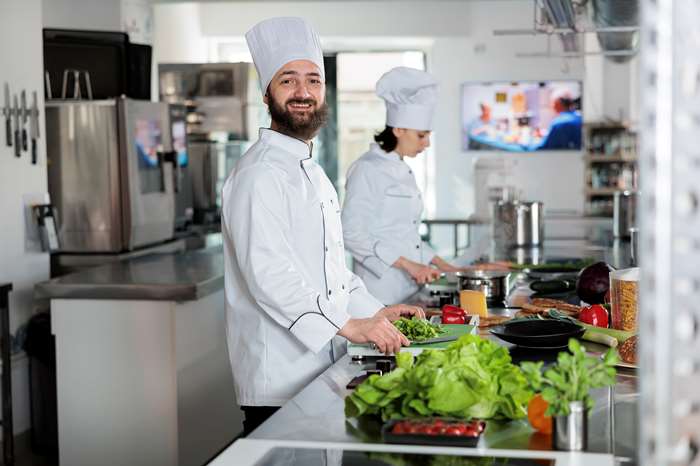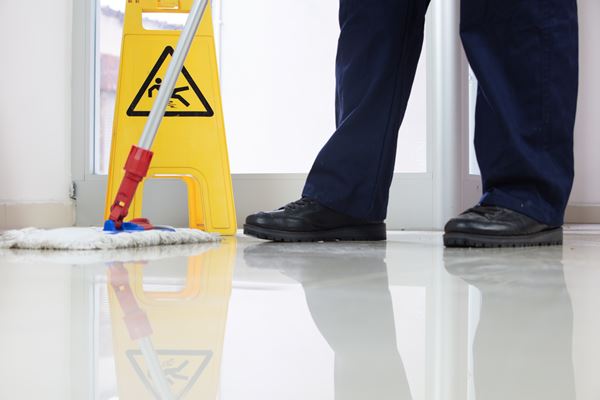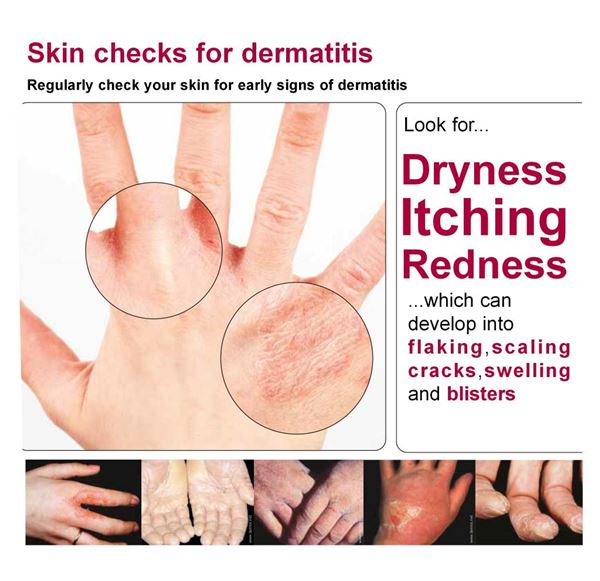Food preparation, cooking and service

Kitchen
This page is for premises that undertake food preparation such as cafes, restaurants, takeaways and mobile caterers. Managing risk in catering and hospitality: Your responsibilities gives a brief introduction to health and safety in this high pressure industry.
Ten safety essentials
Take a look at our ten safety essentials pages. These pages will guide you through the essentials for managing health and safety in your business. The areas below contain specialist advice for you to consider when writing your risk assessments and implementing safe systems of work & procedures to keep staff and visitors safe.
Risk assessment
When undertaking your risk assessment for your business you may wish to look at these examples to give you ideas of hazards and control measures:
Slips, trips and falls
What you must do
You must ensure that your employees and anyone else who could be affected by your work (such as visitors and members of the public), are kept safe from harm. You must assess the risk from slips and trips and take reasonable precautions.
What you should know
Slips and trips remain the single most common cause of major injury in UK workplaces. Every year there are many accidents in the catering and hospitality industry caused by slips and trips. The occupations most affected are kitchen assistants, chefs and waiting staff.
See:
- Preventing Slips and Trips in Food Service
- Stop Slips in kitchens - A good practice guide (PDF, 133KB)
You must assess the risk from slips and trips and take reasonable precautions. Some simple things you might consider as part of your assessment are:
Food spillages

Spills from food or cooking are among the main causes of slips in kitchens. Staff must be vigilant and clean up any spilled substance that could cause a hazard, straight away.
Water overflow or leak
An overflowing sink or a leak that causes water to drip onto the floor can create a serious slip hazard, especially on a smooth floor. Stop it from getting onto the floor in the first place. Turn off taps and fix leaks quickly - use drip trays or something similar as a temporary measure.
Floor in poor condition
It's easy to trip on damaged floors so, if you spot an area of damage, arrange for it to be fixed straight away - don't put off repairs. As a temporary measure, highlight the damaged area, report it and where possible keep people away.
Trip hazards
An unexpected obstacle in your path can cause a serious trip and fall. People need a clear space in which to work, so make sure boxes, bags, cables and other obstacles aren't left lying around. Storage should always be provided for incoming deliveries and staff belongings.
Cleaning
Most slips happen on wet or dirty floors. Anything that gets onto the floor needs to be removed quickly and effectively. Ensure cleaning happens at the right time and is carried out in the correct manner, using the right products and equipment for the job.
Carrying hot oil
Emptying oil from deep fat fryers can be difficult. Make sure you and your staff follow the manufacturers instructions to do this work safely. Safety during emptying and cleaning of fryers
Footwear
It is important that staff wear the correct footwear when working in a kitcehn environment. Often sensible shoes can be sufficient if the correct surface has been laid and contamination is kepott o a minimum. Sometimes specalist footwear may need to be considered. Stop Slips in Kitchens - Get a Grip (PDF, 60KB)
Musculoskeletal disorders in catering and hospitality
What you must do
The Manual Handling Operations Regulations 1992 (MHOR) require employers to:
- avoid the need for hazardous manual handling, so far as is reasonably practicable;
- assess the risk of injury from any hazardous manual handling that can't be avoided; and
- reduce the risk of injury from hazardous manual handling, so far as is reasonably practicable.
Your risk assessment should cover all standard operations, including cleaning and maintenance activities. It should reflect how the work is actually done.
The main areas you should focus on are the task, load, working environment and individual capability.
What you should know
Back pain and other aches arising from manual handling injuries are the most common type of occupational ill health in the UK. In kitchens there are many tasks that, without proper controls, can cause back pain or upper limb injuries that can affect hands, wrists, shoulders and neck.
Lifting and carrying heavy items or pushing and pulling can be a major source of back pain, while forceful or repetitive activities and poor posture can be linked to upper limb injuries.
Catering Information Sheet 24: Preventing manual handling injuries to catering staff, provides information on significant risk areas to look for and offers practical examples of solutions that you can apply in your workplace. It lists other HSE guidance available on manual handling and preventing back pain. It is aimed mainly at employers although it will also be useful to employees and safety representatives.
The key messages are:
- you can easily take action to prevent or minimise this type of injury;
- the preventive measures are cost effective;
- involving staff is key to success;
- training staff in proper lifting techniques, use of handling aids and raising awareness of the risks will reduce the likelihood of injuries in the future;
- early detection and reporting of aches and pains is crucial.
Find out more
- MSD microsite
- Manual handling assessment (MAC) TOOL
This helps user identify high risk workplace manual handling activities - Are you making the best use of lifting and handling aids
- Manual handling at work: A brief guide
- Manual handling assessment charts
- Upper Limb Disorders in the Workplace
- Aching Arms (or RSI) in small businesses
Gas safety
Many kitchens use gas as a means of cooking. It is essential that all business know and understand their duties in relation to gas safety. In order to comply with the law, as a business you should;
- Have your gas installation (the building including pipe work) inspected by a gas safe engineer, and; (This is usually an annual inspection)
- Have your gas appliances (cookers, grills, heaters, boilers etc..) inspected by a gas safe engineer; (This is usually an annual inspection)
- Keep all records of inspection for at least two years, to demonstrate that you are having the checks undertaken
See our Gas safety page for comprehensive guidance.
Solid fuel in catering
When solid fuel is burned, products of combustion, including carbon monoxide gas, are released. Carbon monoxide is a highly poisonous gas with no taste, smell or colour. Even moderate exposure can lead to serious permanent ill health effects or even death. Children, pregnant women and people with heart or breathing problems are particularly at risk. It is therefore essential that if you have solid fuel appliances such as wood/charcoal tandoori ovens, charcoal grills and wood burning pizza ovens, that you have suitable and sufficient procedures in place to protect your employees and anyone else who maybe affected by your activities.
What you must do;
- Ensure the appliance is situated in a suitable place, with free air movement and a working mechanical extract ventilation system.
- Ensure that the mechanical extract system is maintained and has a Thorough Examination under taken every 14 months, or sooner. You must have a certificate, issued by a competent person (See further information) .
- Ensure there is a functioning carbon monoxide alarm fitted in a suitable place, and that employees know what to do if it is activated.
- Ensure all employees know the signs and symptoms of carbon monoxide poisoning. You may wish to display a poster.
- Put a system is in place to ensure that fans are switched on when fuel is lit, and left on until it has stopped smouldering altogether, or you have a safe way of removing lit coals from the premises.
Further information
- Preventing exposure to carbon monoxide from use of solid fuel appliances in commercial kitchens (HSE)
- Ventilation in catering kitchens (HSE)
- Solid fuel catering appliances - Inspectors enforcement guide (HSE)
Find a competent person to undertake Thorough Examinations, by using one of the organisations below:
Ventilation
Having the correct ventilation is really important. Ventilation can remove grease, heat, steam and harmful products of combustion such as Carbon Monoxide and Carbon Dioxide. Ventilation in catering kitchens offers comprehensive guidance on the subject, also see HSE guidance Controlling cooking fumes.
Electrical safety
Electricity can kill or severely injure people and cause damage to property. However, employers can take simple precautions when working with or near electricity and electrical equipment to significantly reduce the risk of injury to you, your workers and others around you.
In order to comply with the law you should:
- Ensure the electrical installation is inspected and maintained in good repair; and
- Ensure that any portable appliances are inspected and tested regularly (PAT Test);
- Keep a records of inspections and tests.
See our Electrical safety page for comprehensive guidance.
Guarding of equipment

Employers have legal duties to ensure all work machinery is safe for persons to use and employees have a duty to use equipment safely. Serious injuries and fatal accidents can occur if machine guards are not used or are tampered with. See our Machine guarding in food premises page for more information.
Contact dermatitis
Work-related contact dermatitis is a skin disease caused by work. It is often called eczema and develops when the skin's barrier layer is damaged. This leads to redness, itching, swelling, blistering, flaking and cracking. The most susceptible parts of the body are the hands, followed by the forearms and face. It can be severe enough to keep you off work or even force you to change jobs.
Contact dermatitis is one of the main causes of ill health for catering staff e.g. chefs, cooks and catering assistants. Work-related ill health can cost more than twice as much as an accident causing the injury.

You can prevent dermatitis developing with a few simple measures:
- Ensure workers avoid contact with cleaning products, food and water where possible, e.g. provide utensils for handling food and where appropriate, use a dishwasher rather than washing up by hand.
- Protect your employees' skin. Where necessary, provide gloves for those working with substances that can cause dermatitis and provide moisturiser for their hands to replenish the skin's natural oils.
- Ensure they check their hands regularly for the early stages of dermatitis, i.e. itchy, dry or red skin. These symptoms should be reported to a supervisor, as treatment is much more effective if dermatitis is caught early
More information:
- Skin at work website
- Skin problems in the catering industry
- Information about dermatitis
- Skin contact - distance your skin from chemicals and wet work
- Hand washing and applying hand cream
- Method for using hand cream,soap and cleanser
- Skin checks for dermatitis
- How to put on and take off Reusable gloves (chemical resistant)
- How to put on and take off Single use gloves (splash resistant)
Pressure systems
A pressure system is one that contains or is likely to contain a relevant fluid over 0.5 bar.
Many types of pressure equipment can be hazardous – examples are:
- boilers and steam heating systems
- pressurised process plant and piping
- compressed air systems (fixed and portable)
- pressure cookers, autoclaves and retorts
- heat exchangers and refrigeration plant
- valves, steam traps and filters
- pipework and hoses
- pressure gauges and level indicators
- steam coffee machine
When things go wrong, these types of equipment can cause serious injuries and even fatalities. However, assessing the risks and putting proper precautions in place will minimise the chances of any accidents occurring.
Owner of pressure systems have a statutory duty to have them inspected, frequency of inspection depends upon the equipment. Hot water boilers (coffee machines) need to be inspected every 14 months, Steam pressure vessels need to be inspected every 26 months. You can find the frequency of inspection with the manufacturers instructions.
Beverage Gas
Many catering establishments use beverage gas systems. It is important that these systems are maintained and used correctly. Ensure that you are following the guidance below:
GN30 The safe use of gases in the beverage dispense industry. Revision 1: 2017 (PDF, 980KB)
Making the right choice in beverage gas (PDF, 547KB)
Gas equipment inspection replacement date marking (PDF, 2.4MB)
Mobile caterers
Catering at outdoor events is a high risk activity whether at an established venue, market or at a temporary or mobile function. The large numbers of people, frequent use of temporary staff, the temporary nature of the accommodation and high-risk products for sale place specific pressure on food and health and safety management:CIEH National Guidance Outdoor & Mobile Catering (PDF, 839KB) offers comprehensive guidance for mobile caterers.
Other guidance
- HSE: Safe use of knives
- HSE: Safety during emptying and cleaning of fryers
- HSE: Safe use of cleaning products in the catering industry
- HSE: Preventing exposure to carbon monoxide from use of solid fuel appliances in commercial kitchens
- HSE: Maintenance priorities in catering
- Federation of Bakers: A bakers dozen 13 essentials for health and safety in bakeries
- HSE: Manual handling in the food & drink industry
- British Meat Processors Association: Health and safety guidance notes for the meat industry
Fire safety
You will also need to ensure that you have suitable fire precautions in place;
- A guide to making your small non-domestic premises safe from fire
- Small and medium places of assembly
- Large places of assembly
Fire safety precautions are enforced by Lancashire Fire and Rescue and not the Council.
HSE - Slips in Kitchens
Last updated: 16 August 2024
